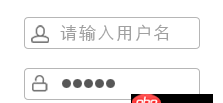Android ExpandableListview 如何用循環(huán)把 組和子元素展示出來
問題描述
以下代碼只是一個(gè)例子把組合子元素展示出來。 如果我連接去數(shù)據(jù)庫的話, 這種方法顯然行不通。因?yàn)槲覀儫o法確定有多少個(gè)組合多少個(gè)子。 大神們可否指點(diǎn)一下如何用 循環(huán)把它們展示出來? 例如用 For 循環(huán)。
adapter adapter; // BaseExpandableListAdapterExpandableListView expandableListView;List<String> category;HashMap<String,List<String>> item;@Overrideprotected void onCreate(Bundle savedInstanceState) { super.onCreate(savedInstanceState); setContentView(R.layout.activity_ex_listview); expandableListView=(ExpandableListView)findViewById(R.id.listview); display(); adapter=new adapter(this,category,item); expandableListView.setAdapter(adapter);}public void display(){ category=new ArrayList<String>(); item=new HashMap<String,List<String>>(); category.add('Western Food'); category.add('Chinese Food'); category.add('Japanese Food'); List<String> western_food = new ArrayList<String>(); western_food.add('Fried Chicken'); western_food.add('French Fries'); western_food.add('Beef Steak'); List<String> chinese_food = new ArrayList<String>(); chinese_food.add('Chicken Rice'); chinese_food.add('Duck Rice'); List<String> japanese_food = new ArrayList<String>(); japanese_food.add('Tapanyaki'); japanese_food.add('Takoyagi'); japanese_food.add('Sushi'); japanese_food.add('Lamian'); item.put(category.get(0), western_food); item.put(category.get(1), chinese_food); item.put(category.get(2), japanese_food);}

問題解答
回答1:無需知道有多少個(gè)組合與子,只要從數(shù)據(jù)庫中獲取的數(shù)據(jù)你能區(qū)別不同的組合與子所屬的組合就可以了。將數(shù)據(jù)放到相應(yīng)的存儲(chǔ)集合中,在通過設(shè)計(jì)Adapter就可以展示。
相關(guān)文章:
1. mysql - sql 左連接結(jié)果union右連接結(jié)果,導(dǎo)致重復(fù)性計(jì)算怎么解決?2. 網(wǎng)頁爬蟲 - python 爬取網(wǎng)站 并解析非json內(nèi)容3. mysql 遠(yuǎn)程連接出錯(cuò)10060,我已經(jīng)設(shè)置了任意主機(jī)了。。。4. 默認(rèn)輸出類型為json,如何輸出html5. 數(shù)組排序,并把排序后的值存入到新數(shù)組中6. php多任務(wù)倒計(jì)時(shí)求助7. mysql怎么表示兩個(gè)字段的差8. javascript - 滾動(dòng)到指定高度 開始輪流放動(dòng)畫,QQPC官網(wǎng)就是這么做的,請(qǐng)問使用什么開源庫方便點(diǎn)?9. PHP訂單派單系統(tǒng)10. MySQL的聯(lián)合查詢[union]有什么實(shí)際的用處

 網(wǎng)公網(wǎng)安備
網(wǎng)公網(wǎng)安備